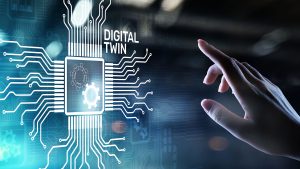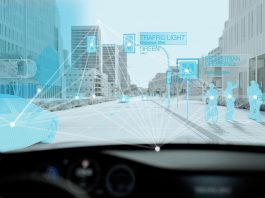Researchers have assessed the best treatment for a patient with a cerebral infarction or cerebral haemorrhage by performing the procedure on their digital twin.
It may sound like something from a science-fiction film, but the researchers hope their digital twin concept will become a reality within six years.
They received a Horizon Europe grant worth €10m from the European Commission to lead 19 partners in making this a reality.
Incorporating digital twin technology into the medical industry
Researchers have used computers for years to simulate card designs and aeroplane flights.
Now, Henk Marquering, Professor of Translational Artificial Intelligence at Amsterdam UMC, wants to bring digital twin technology to the field of medicine.
He commented: “Strangely enough, computer simulations in our work are far from the norm despite having the potential to be an incredibly valuable tool.
“With this project, we want to first test the treatment for individual stroke patients on a digital twin. The doctors can see in the simulation which treatment works and which doesn’t.”
In addition to the EU’s €10m, two partners from Switzerland and a partner from Taiwan are contributing a total of €3m.

Each partner from the 12 countries contributes a share of its own expertise in the field of computer simulation and medicine.
Knowledge-based Artificial Intelligence
Alfons Hoekstra, Professor of Computational Science at the University of Amsterdam, explained that their digital twin technology is not an animation but real calculations.
“We enter the blood pressure, heart rhythm, information from the brain scan, and other medical data of the stroke patient,” he said.
“Then a kind of ‘digital twin’ is generated on which we can simulate treatments.”
A concrete example is the removal of a blood clot in the event of a cerebral infarction. By running simulations, doctors can see if a specific treatment will leave the patient’s blood clot intact or disintegrate it.
“By simulating the process, the patient receives the most optimal treatment,” stated Charles Majoie, Professor of Neuroradiology at Amsterdam UMC.
“We are now finding out what is good for the individual patient. The more measurements we can put into the digital twin, the more precisely we can predict what the best treatment will be,” Hoekstra added.
This way of entering data into a computer model is also known as knowledge-based Artificial Intelligence, which uses in-depth biological and medical knowledge of strokes. This is different from data-driven Artificial Intelligence, which purely looks at large amounts of data, and uses the data from many previous patients to make predictions.
Future uses of the research
Over the next four years, the researchers will be working on the technology that will make it possible to create a digital twin.
Once this technology is in place, they expect to need another two years or so to turn it into a computer simulation that can be used in practice. This is so that doctors will soon be able to use their computers to arrive at the most suitable treatment method for their patients.
Marquering concluded: “A treatment that was first virtually tested on your digital twin? Now that’s tailor-made care.”









